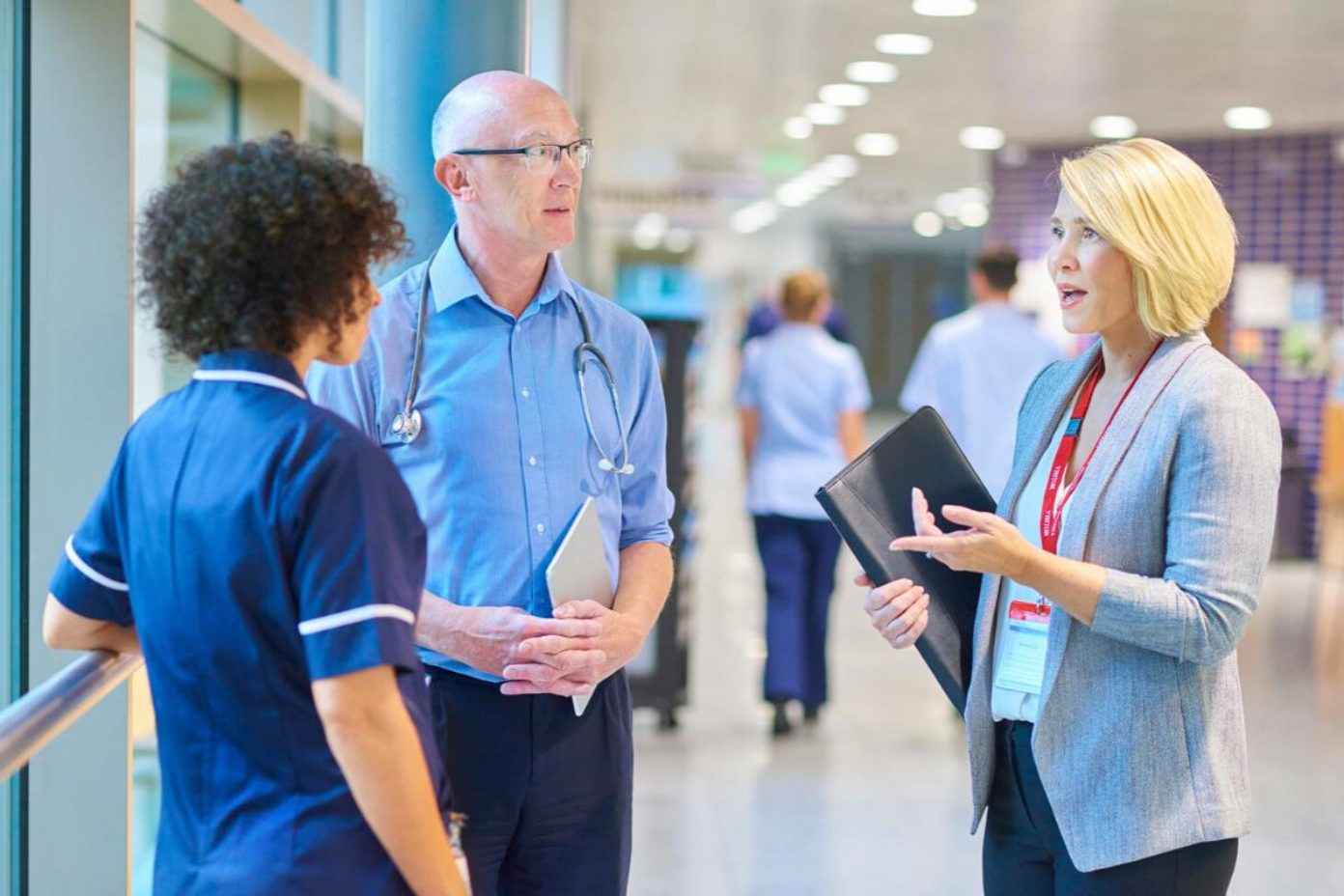Medical-Legal Partnerships Are Public Health Law Issue-Spotters
August 15, 2018
Overview
Medical-Legal Partnerships are uniquely positioned to identify legal failures and gaps and are important partners for public health. Often, patterns in individual health-harming legal challenges reflect a need for population-level intervention.

When thinking about laws and their effect on the public’s health, attorneys and legal researchers often start—and end—with the language of the law. We look at the structures and conditions that the law, on its face, seems designed to create. But this analysis misses an important piece of the puzzle: it doesn’t account for differences in implementation and enforcement, both of which may vary and yield disparate health outcomes among different communities and populations. To more accurately evaluate a law’s effect on health, Professor Scott Burris explains that we must consider both the law as written (“the law of the books”) and the law as implemented (“the law on the streets”).
Health-harming differences in the implementation and enforcement of laws (i.e., differences in the “law on the streets”) can be difficult to identify. Especially where a given law is not labeled as a health or public health law—for example, housing codes or immigration laws—deleterious impacts on health may go unnoticed (hence the need for a health in all policies approach). But even where a law is evaluated for its impact on health, the law may be perceived as ineffectual or even counterproductive if it is not effectively implemented or enforced.
In her seminal article on the relationship between medical-legal partnerships (MLPs) and public health law and policy, Professor Liz Tobin Tyler argues that this gap in understanding how the “law on the streets” affects health is one that MLPs are perfectly suited to help address. The medical-legal partnership model embeds civil legal aid attorneys on health care teams in hospitals, federally qualified health centers, and other health care centers to address the “health-harming legal needs” that keep individuals from attaining optimal health.
The National Center for Medical-Legal Partnership (NCMLP) categorizes these legal needs—all of which are social determinants of health—into five categories: Income and Health Insurance; Housing and Utilities; Education and Employment; Legal Status (e.g., immigration status, criminal record status); and Personal and Family Stability. As members of the health care team, legal aid attorneys not only navigate and resolve individual patients’ legal problems, but also assist health care partners to spot legal issues that are affecting health, improve institutional practices (for example, one MLP team persuaded insurance companies to change their internal policies requiring mail-order delivery of time-sensitive HIV Post-Exposure Prophylaxis prescriptions), and confront detrimental policy and system barriers (another MLP spearheaded a coalition that successfully advocated for improvements to the federal Lead Safe Housing Rule). As of August 2018, the NCMLP reports that well over 300 health organizations across 46 states have established MLPs.
The law on the streets is precisely the space in which MLPs operate: they help individual, low-income clients when they have been harmed by private individuals (often due to enforcement failures) or when their rights have been violated or their needs not met by systems intended to serve them (likely due to implementation failures). MLP attorneys are positioned to pinpoint specific legal problems, identify the legal and system failure(s) that contributed to those problems, and then advocate for legal remedies on behalf of individuals or equip individuals to advocate for themselves.
From seeking a protective order in a domestic violence case, to negotiating with a public housing authority to improve housing conditions, to advocating for necessary public school services as part of a child’s Individualized Education Program, civil legal aid attorneys are on the ground, working day-to-day with patients and observing the ways in which laws do not work or produce unintended and harmful outcomes. Often, patterns in individual challenges reflect a need for population-level intervention.
MLP teams’ intimate knowledge of legal failures and gaps makes them important partners in any effort to address the social determinants of poor health through law. Recognizing the potential for powerful collaboration, the Network for Public Health Law, National Center for Medical-Legal Partnership, and MLPs from across the country have teamed up to collaborate on health issues affecting different communities. Check back soon for my next blog post describing this collaborative effort.
Note: Professor Scott Burris and Professor Liz Tobin Tyler are both scheduled to speak about public health law and medical-legal partnership, respectively, at the upcoming 2018 National Public Health Law Conference, October 4 – 6 in Phoenix, Arizona.
This post by Colleen Healy Boufides, JD, Senior Attorney, Network for Public Health Law – Mid-States Region Office.
The Network for Public Health Law provides information and technical assistance on issues related to public health. The legal information and assistance provided in this document do not constitute legal advice or legal representation. For legal advice, readers should consult a lawyer in their state.
Support for the Network is provided by the Robert Wood Johnson Foundation (RWJF). The views expressed in this post do not necessarily represent the views of, and should not be attributed to, RWJF.
